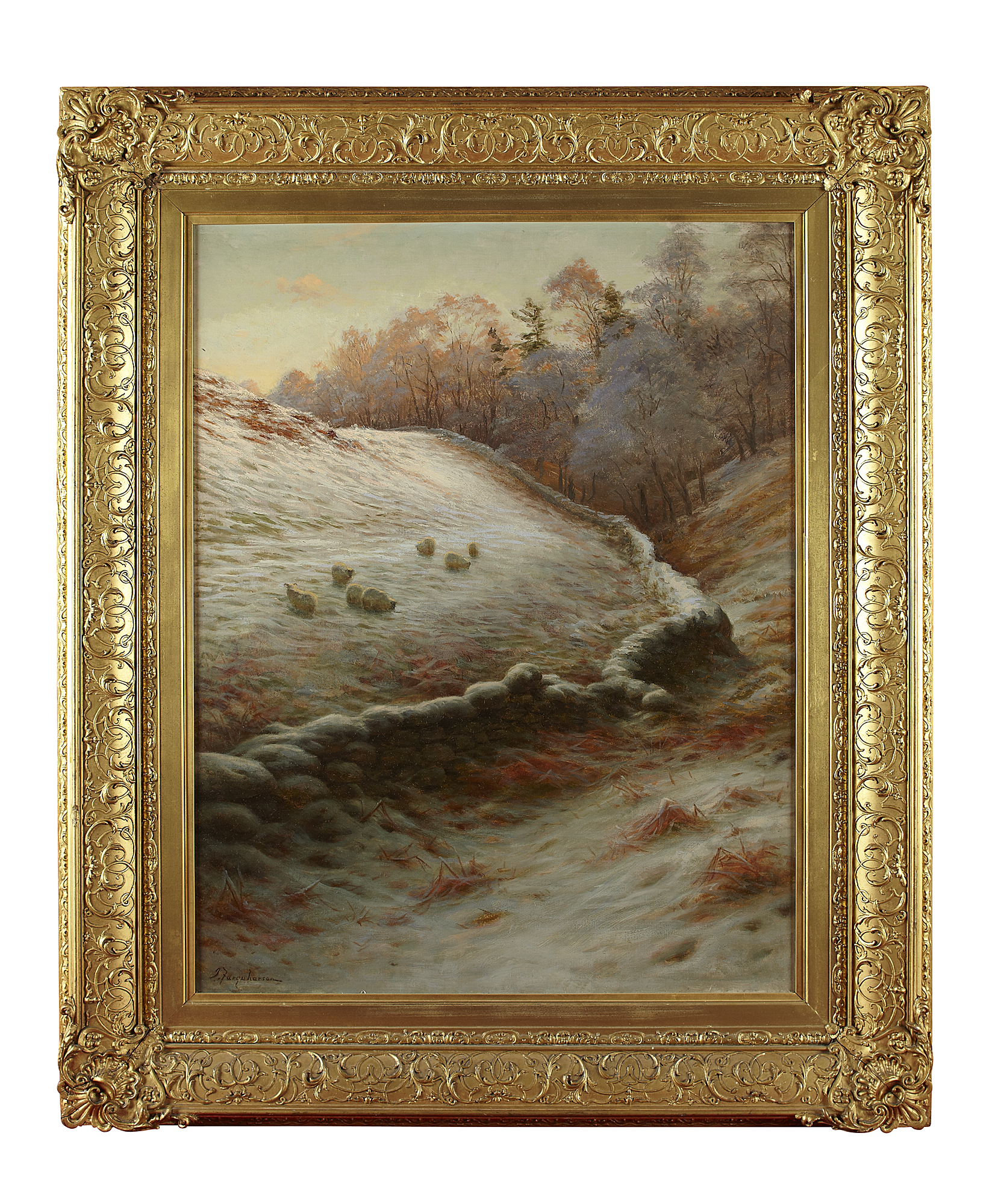
Lot 153

JOSEPH FARQUHARSON R.A (SCOTTISH 1846-1935)
SHEEP GRAZING IN A SNOW COVERED LANDSCAPE


Auction: 2 June 2011 at 19:00 BST
Description
Signed, oil on canvas
Dimensions
91cm x 71cm (36in x 28in)
Footnote
The hill, the vale, the tree, the tower,
Glowed with the tints of evening's hour,
The beach was silver sheen,
The wind breathed soft as lover's sigh,
And, oft renewed, seemed oft to die
With breathless pause between.
- Sir Walter Scott, The Lord of the Isles, XIII: 15-20
Although trained in Paris and exhibiting in London, Joseph Farquharson was deeply tied to the Scottish countryside and his Finzean estate, as the source for the title of this painting illustrates. He was born in 1847 in Edinburgh, and began his artistic education at the Trustees' Academy, and at the life classes of the Royal Scottish Academy, where he first exhibited at the age of just fifteen. This work, titled Study from Nature, is perhaps prophetic of his mature interest in the natural world, and the snow-laden landscape scenes for which he would later become famed. His precocious talent might also have hinted at his future development into a painter whose 'extraordinary virtuosity' would be admired by fellow artist Walter Sickert.1
The young Farquharson was much influenced by landscape painter Peter Graham, however the four winters from 1880 that he spent under the tutelage of Carolus-Duran in his Parisian atelier proved to be a turning point in his development as an artist. The French academic painter discouraged his pupils from using under drawings, instead urging them to shape the forms of their work directly on the canvas in paint. Indeed, in Farquharson's work, such as this painting, we observe his masterful - and traditional - painterly technique, which Sickert believed led to the contemporary viewer's 'slight sense of playing truant from Bloomsbury'. Whilst in Paris Farquharson would also have had the opportunity to experience first-hand the works of the Barbizon School and the Impressionists, famed for their work en plein air and, indeed, in 1881 he exhibited the snowscape Paysage - effet d'hiver at the Salon. Returning to Scotland, however, he ingeniously adapted the methods of his continental counterparts to the harsher northern climate by building a number of heated painting huts throughout the Finzean estate. Safe in their relative warmth, Farquharson could observe the effects of a dying day's light on snow and trees from behind a large glass window, sometimes waiting weeks in order to capture a fleeting atmospheric condition on canvas.
Farquharson became famed for his snow-scenes (leading to the epithet 'frozen-mutton Farquharson'), exhibiting at least one each year in the Royal Academy from 1894 to 1925, excepting 1914, the year of his marriage. This work, exhibited at the Royal Academy in 1911, displays those qualities most-loved in 'The Painting Laird's' work; his faithful capture of the distant rose glow of an evening sun across a winter landscape, the scene filled with a quiet stillness, broken only by the beat of a crow's wing through chill winter air. In this world, nature rules supreme; man's only trace his weary tracks beaten through snow and mingled with those of the sheep he has led on to warmer pastures, the cottages around the stream's bend bowed beneath their frosty blanket, yet hinting at warmth and companionship beside the hearth. Indeed, such works were so admired that crowds would eagerly gather around them at the Royal Academy shows, delighting in each subtle variation on familiar themes, while prints after his paintings proved infinitely popular.
1Irwin, Francina. 1985. 'Joseph Farquharson of Finzean', Waverley Press, Aberdeen, pg. 5.

